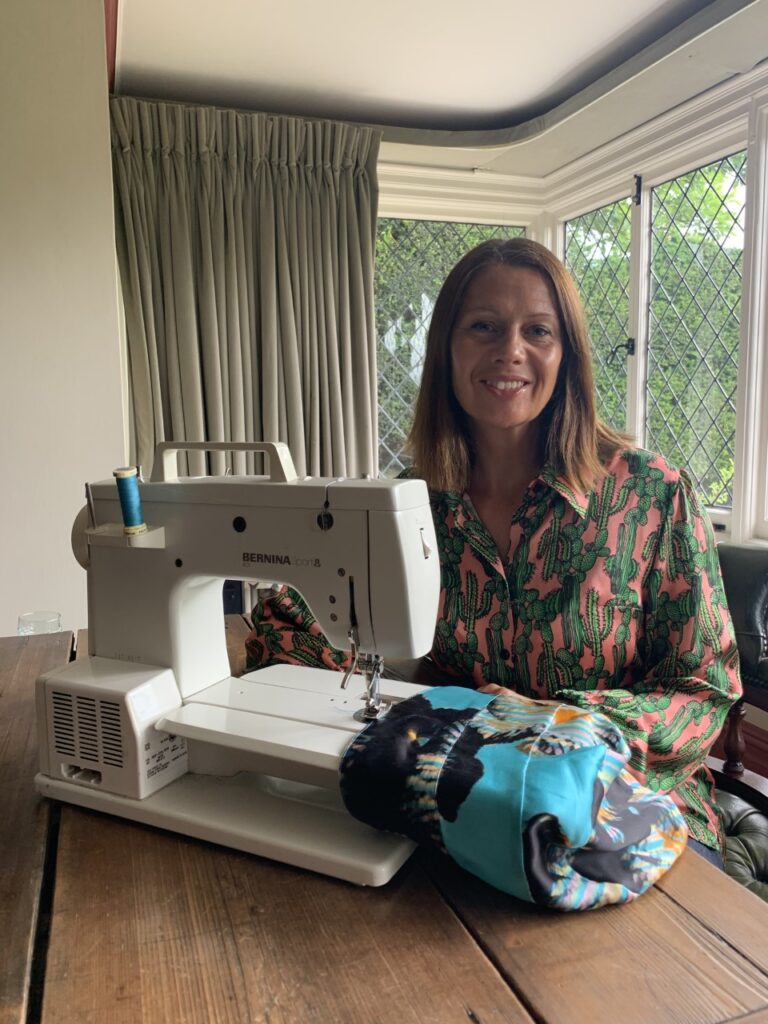Sustainability
I’ve been meaning to write this for ages but having watched “’Fashion Reimagined” this week (which is the most amazing documentary, you should definitely watch it!) it’s kick started me to actually do it. I’m now in awe of Amy Powney and the work she has done at Mother of Pearl, having both a degree in textiles and having worked out of the Far East for many years in my previous job I know these supply chain issues are real. This is one of the reasons I love what I am able to do at Chemo Headwear, I manufacture everything myself allowing me to have full control of my supply chain and not relying on factories to make my headwear. Being a small independent business I buy all my fabric from where I want to buy it from & I cut and make each piece to order therefore reducing fabric waste.
Deadstock fabric
The fashion industry accounts for about 10% of global carbon emissions and nearly 20% of waste water. I strive to use deadstock fabric or GOTS certified fabrics where I can. What is deadstock fabric? It is the difference between the fabric a mill produces and how much a designer uses and sells as garments. It is almost unavoidable in the industry if both designers & fabric mills are to be commercially viable. It takes time to weave/knit/print a fabric design and this is costly for the mills so they want to make longer runs of fabrics leading to fabric minimums so that they don’t have to keep resetting the looms to make small batches of fabric which would be uncompetitively priced. The designers do not always know which fabrics will be best sellers and so need to order more fabric than they might need to maximise their sales. Once they go into production and start selling the garments only then will they know which styles & fabrics are best sellers. At this stage they will go back to the fabric mills to order more fabric but if it doesn’t sell well then they will be left with too much fabric. This is deadstock fabric. In the past it might have ended up in landfill but now designers are selling it as deadstock. I always try & source Liberty deadstock where I can.
GOTS Fabric
The Global Organic Textile Standard (GOTS) has a clearly defined set of criteria and is transparent. GOTS is the worldwide leading textile processing standard for organic fibres, including ecological and social criteria, backed up by independent certification of the entire textile supply chain. I use GOTS certified fabric for my Amber cotton turbans.
Fabric Waste
Fabric waste is also a big problem in clothing production when massive runs are cut of a particular style and then end of run fabric is left over (back to the deadstock) but also if a lay plan is made for many layers of fabric to be cut at once then sides of fabric and areas where pattern pieces don’t fit closely together leads to scraps of fabric. These usually end up in landfill as are too small to use by large factories. By cutting small quantities by hand you can make better use of the fabric with less wastage, this is what I do. The fabrics I get from designer Ellie Lines are exactly this, ends of runs and pieces of fabric that were outside of a lay plan and therefore very odd shapes & sizes that wouldn’t be large enough to use for garments but are perfect for sections of my Alice headscarf style. Therefore, cutting back on environmental damage by up-cycling existing fabrics. I also give all my scraps to a local quilt maker, so my tiny off cuts still go on to have another life. Upcycling the upcycling!

